News & Articles
Browse all content by date.
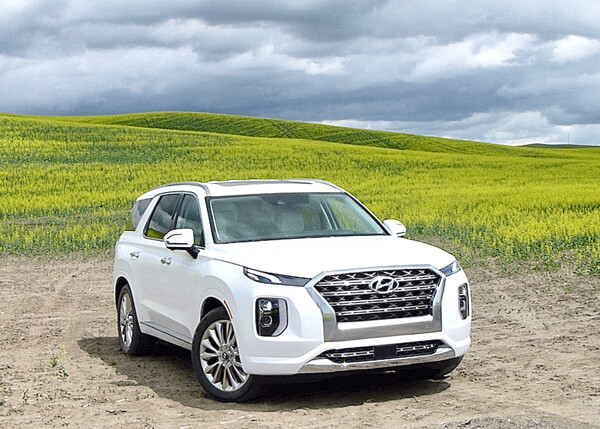
COEUR d’ALENE, Idaho
Hyundai’s small-to-compact SUVs are selling at a fantastic rate, but the company also has heard from consumers with three or more kids: “We want more room.” Even the most loyal Hyundai buyers have to turn to Toyota, Ford or General Motors if they want a larger, three-row SUV, and there’s no reason to lose those customers.
So when Hyundai decided to make its largest SUV, it didn’t miss a trick — including the name, Palisade.
A few years ago, I couldn’t have guessed what a Palisade actually is, but living on Minnesota’s North Shore of Lake Superior, you get used to the large, substantial, rock cliffs that line the scenic shoreline all the way beyond the Canada border. You might even enjoy visiting one of the neatest North Shore tourist sites, “Palisade Head.” The view from atop Palisade Head is fantastic, and some adventurous types bring rock-climbing gear and conduct rapelling exercises over the edge.
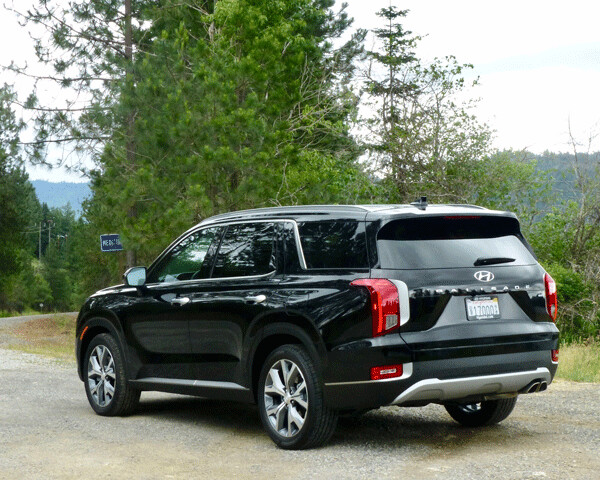
“Our vehicle names generally are taken from Southwest or Western locations,” said Mike O’Brien, Hyundai’s vice president of product planning. “This time, we wanted to match the character of a fortress, something substantial. Palisade represents a slice of a cliff, and symbolize strength.”
O’Brien was addressing automotive media types summoned ion several waves to Coeur d’Alene, a jewel of a mountain resort spot located right in the narrow northern part of Idaho, for the first driving impressions of the Palisade. The Palisade replaces the Santa Fe XL as the largest SUV from the South Korean company, and while its bold grille doesn’t resemble anything seen on the Santa Fe, Tucson or Kona, it accumulates all of the almost futuristic features of those smaller siblings and aims high, for those wanting more luxury than simply a bargain.
The Palisade could alter Hyundai’s bargain status because of its remarkable luxury fittings. “We’ve focused on premium design and materials,” said O’Brien. “It’s a new image for us.”

However, Hyundai might find it difficult to shake the “bargain” image, because the prices for SUVs with the size and features of the Palisade are often up to twice its price. Palisades range from $31,580 for the base SE, to $33,500 for the SEL, which can accept all sorts of feature packages that can add $10,000. The top Limited model starts at $44,700, and it, too, can add price with some amazing option packages.
“We have strong loyalty to our sedans, like the Sonata, Elantra and Accent, but subcompact SUVs have become the largest segment with midsize SUVs a close second,” said O’Brien. “Sixty-five percent of our total sales come from SUVs.”
With 10 new or substantially redesigned models introduced in the last year, Hyundai has had 10 consecutive months of increased sales over the previous year, and CEO Brian Smith said that while the industry is down 5 percent, Hyundai is up 5 percent.
I had the opportunity to do a little extra driving of a Palisade Limited AWD, taking it on a fabulous drive from Coeur d’Alene westward past Spokane and then away from the freeway and up Hwy. 2 to the Grand Coulee Dam, then to the Chief Joseph Dam and northward to Winthrop, a neat tourist-intense little town, and then onward, to Bellingham, Wash., and the Pacific Ocean.
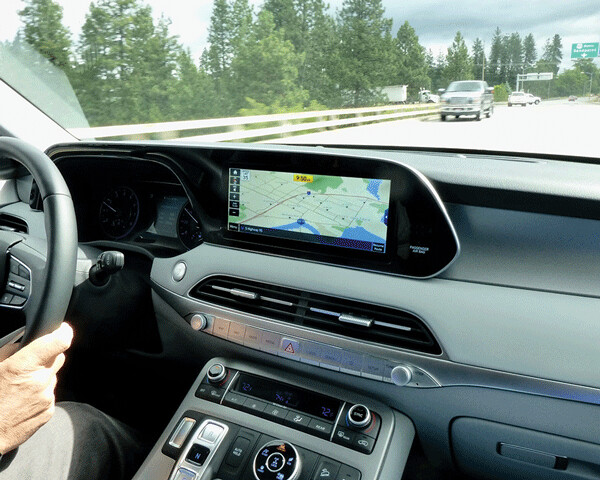
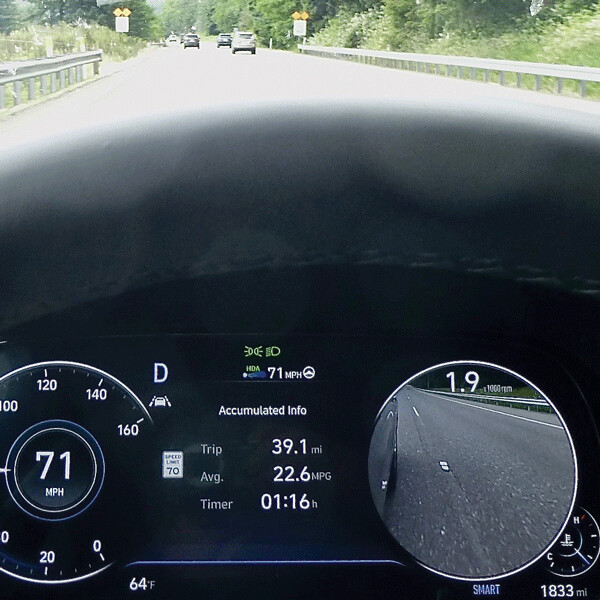
The features Hyundai does very well, such as the lane departure warning, lane-keep assist, and lane-centering, plus the excellent radar adaptable cruise control. One of my favorite new tricks is the ultra-helpful instrument panel. If you’re in the middle lane of a 3-lane freeway, and you flick the turn signal to get three blinks and change to the right lane, for example, the large tachometer on the right changes instantly, to a large, round image from a rear/side camera that immediately shows you that the lane is clear. Or not. Fantastic for entering freeways, too.
You may prefer the intercom, which lets the driver speak uninterrupted to kids in the back two rows. Or the drive-by-wire shift buttons that save considerable room on the center console. Or the mode switch that allows you to switch from Smart, to Sport, to Comfort, to Eco, or to Snow, to fit whatever you’re driving requires.
Less apparent is the built-in anti-skid control that uses over 50 inputs to predict slippage before you actually slip, making it a predictive system instead of reactive. Along with the auto-leveling rear suspension, and steering wheel paddles to control the 8-speed automatic with manual control.
Chief designer Chris Chapman drew a sketch of how the Palisade came to life, to what he calls “personalization” of a concept turning it into the actual design. As his drawing developed, the key features of the Palisade showed through: balanced on all four wheels, with the “C” pillars sloped rearward to the top of the rear wheelwell; the side contours veer away from each other and then meet again in harmony; the headlights, foglights, driving lights and taillights all have a piercing LED potency; the “shoulders” of the sides of the occupant compartment are minimized in favor of the biceps just lower — to put the muscle of the bicep closer to the wheels, Chapman explained.
“Early on and throughout, that piercing quality became something like an emerging predator, coming up out of the water,” said Chapman.
When a designer gets on a roll, you don’t interrupt him with needless questions. You simply look for and appreciate subtle touches, like the three scallops in the rear fascia of the skid plate, with the dual exhaust pipes nestled asymmetrically in the right one.
“It’s a different design,” Chapman acknowledged. “But we’re not doing Russian dolls here, where each one fits inside the other and they all look the same. We wanted to differentiate from the Kona and Santa Fe, and we stressed ergonomics, fit and finish.”
For structural strength, O’Brien pointed out that the Santa Fe XL graded out to 27.8 in torsional rigidity, and while the all-new Ford Explorer — one of Palisade’s top targets — came in at 27.1, the new Palisade is up to 34.4. Hyundai always has featured substantial amounts of high-grade steel, and the Palisade is made up of 59 percent high-strength steel, from Hyundai’s own steel plant. The engineers have found a way to hot-stamp the high-strength steel to improve its rigidity even more. The 2020 Explorer, incidentally, has 25 percent high-grade steel, but it is aluminum intensive.
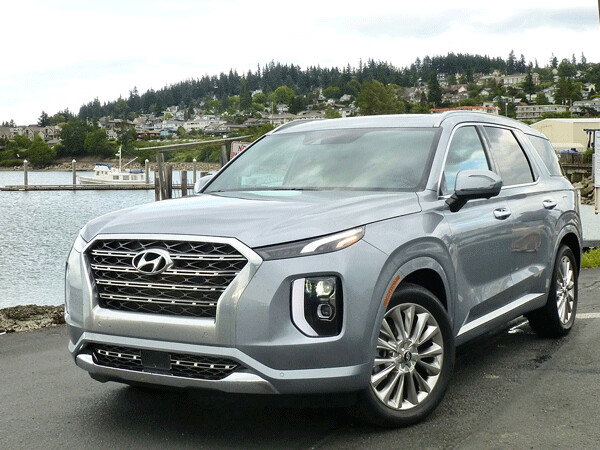
The hoop structure surrounding the passenger compartment has been strengthened too, and focus was on strengthening the structure even with sunroofs, which weaken the rigidity normally. The body was designed to incorporate sound-deadening foam panels under the floor and injected into the roof pillars to eliminate wind and road noise.
The low stance and firm structure are coupled with MacPherson strut front and multi-link rear suspensions to handle the fluctuations from the stiff body.
Performance of a big SUV is as important as interior space, and engineering takes care of that, too, with Hyundai’s 3.8-liter V6 delivering 291 horsepower at a peak of 6,8600 RPMs, and 262 foot-pounds of torque at 5,200. The price sheet shows it achieves 19 city and 24 highway fuel economy estimates, but I was able to get it up to and over 28 mpg going up and down mountainsides.
O’Brien explained that the engine has been modified to combine Atkinson Cycle and Otto Cycle operation, which are opposites in how they adjust valve opening and closing schemes. “That allows us to get both economy and power,” he said.
The Palisade also can tow 5,000 pounds in all forms, competing well with the Highlander, Pilot, CX-9, and Explorer. The Explorer is a rear-drive platform, the Palisade front, so when you switch the drive mode to “eco,” you have the efficiency and traction of a front-wheel-drive platform. As usual, Hyundai likes to carry its fight “above its weight class,” which could challenge Yukon, Tahoe, Cadillac SRX and even the Volvo XC-60 and XC-90.
To me, the Palisade drives more like a smaller SUV than one that has so much interior room, and more agility is always a good thing. A unique push-button system makes the second row slide, recline, or flip its backrest forward for ease of entry to the third row, and that third row will surprise adults with how comfortably appointed and roomy it is. It comes with a second-row bench seat or two captain’s chairs to seat eight or seven. Palisade offers 18 square feet of storage space behind the third row, and it expands greatly when you lower the third, and maybe second, rows.
With everything folded down, I’m guessing 6-footers could unroll a pad and sleep back there. Turning the Palisade into a compact mini-motorhome would only enhance the pleasure of a trip through the rugged Cascades of Washington, or even the North Shore of Minnesota.

| Tweet |


